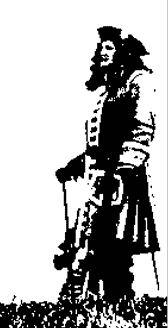The two French commanders-in-chief often quarrelled. Louis Joseph, Duke of Vendôme, was an experienced and shrewd soldier. But the Duke of Burgundy was noticeably less experienced. He owed his position to the fact that he was the grandson of the king, Louis XIV of France.
Vendôme wanted to draw Marlborough out by attacking the town of Huy, but eventually and by order of Louis XIV himself it was decided to march into Flanders and Brabant. The army advanced in an easterly direction until it reached Eigenbrakel, a town about 25 kilometres south of Brussels. From there also the town of Leuven was endangered. Marlborough positioned his troops a few kilometres south of Leuven, so that he could come to the aid of both threatened cities.
The French army, however, did nothing for over a month, enabling the army of Eugène to move from the Rhine area in Marlborough’s direction. On 5 July the French army suddenly got into action and surprisingly moved west, where it seized Bruges and Ghent (about 300 British soldiers managed to offer resistance for a couple of days in Ghent). Marlborough and his army were considerably demoralized by this action and he only managed to recover himself with the help of Eugène.
The French army controlled the entire length of the river Scheldt from the French border to the occupied city of Ghent. The British held only one fortress: Oudenaarde. If the French were able to capture this town too, they would cut off Marlborough’s army from the sea and make communication with England impossible.

